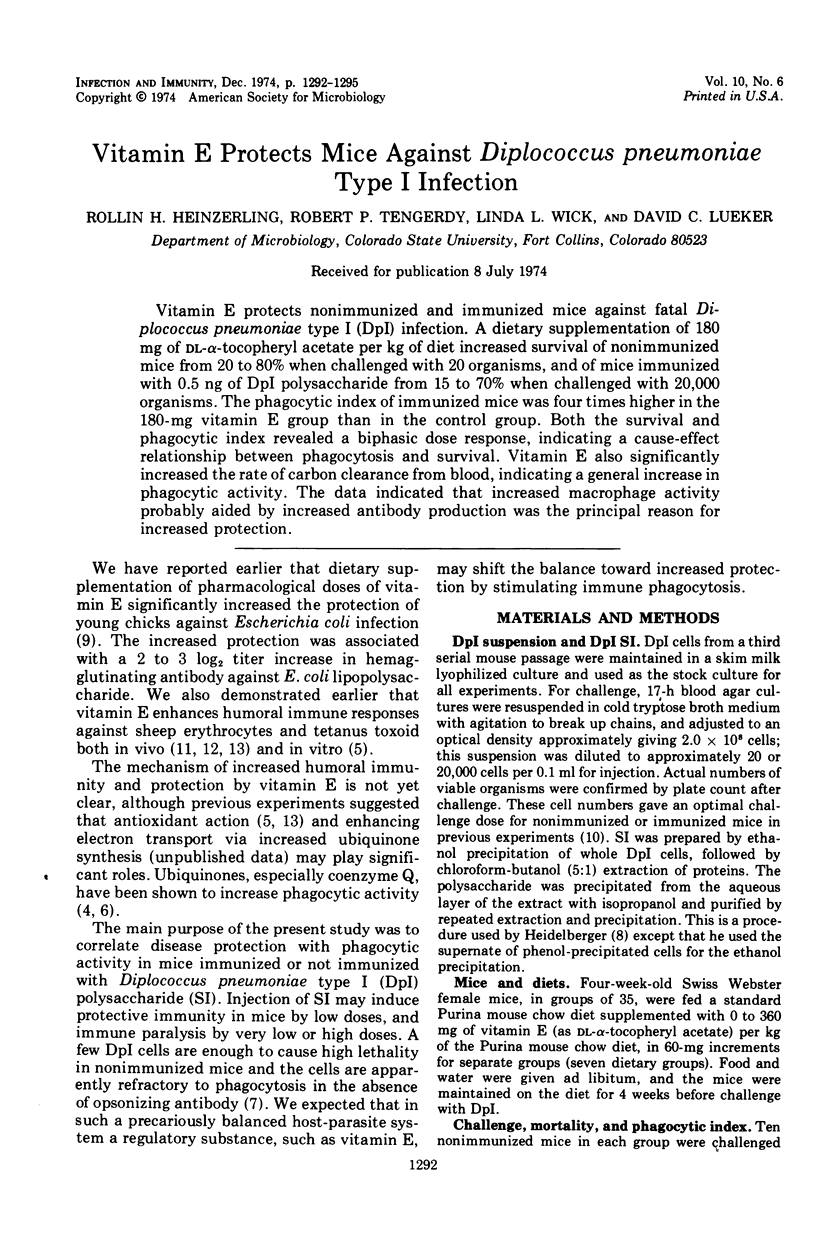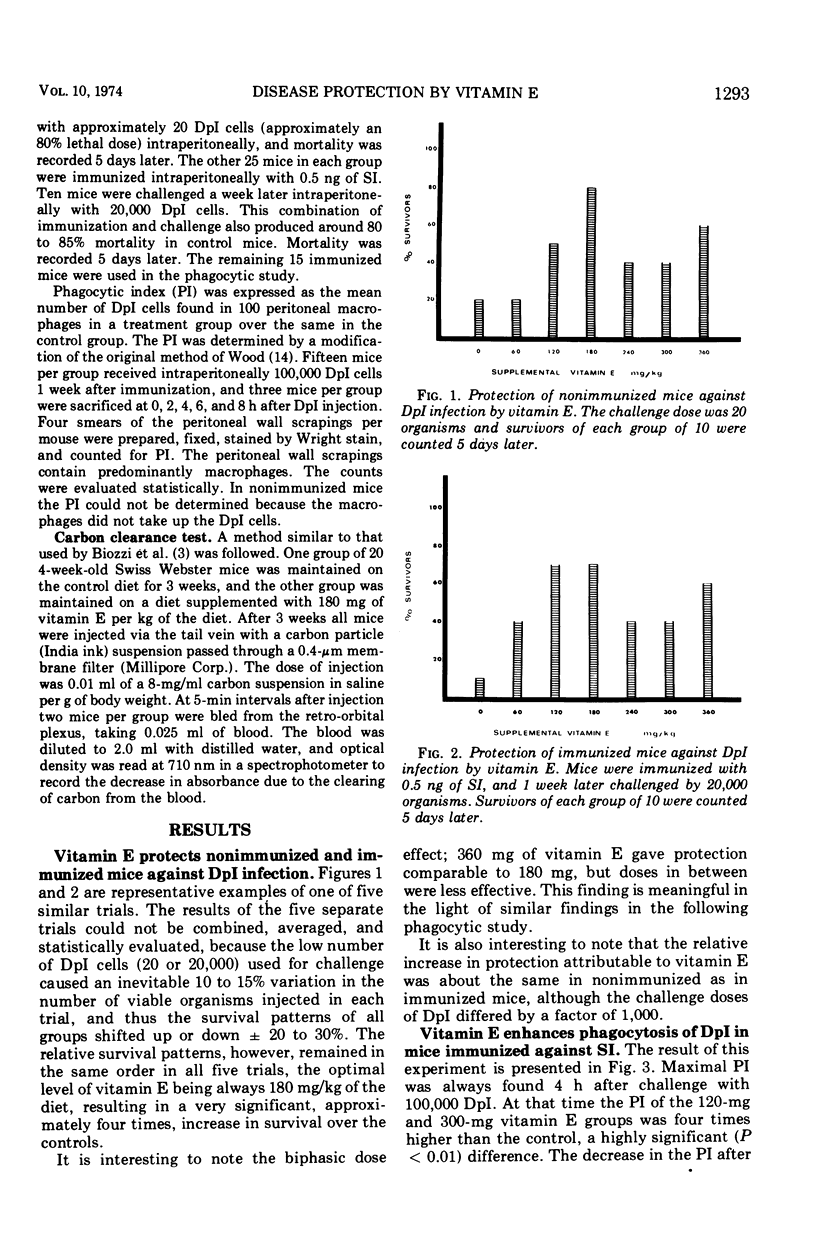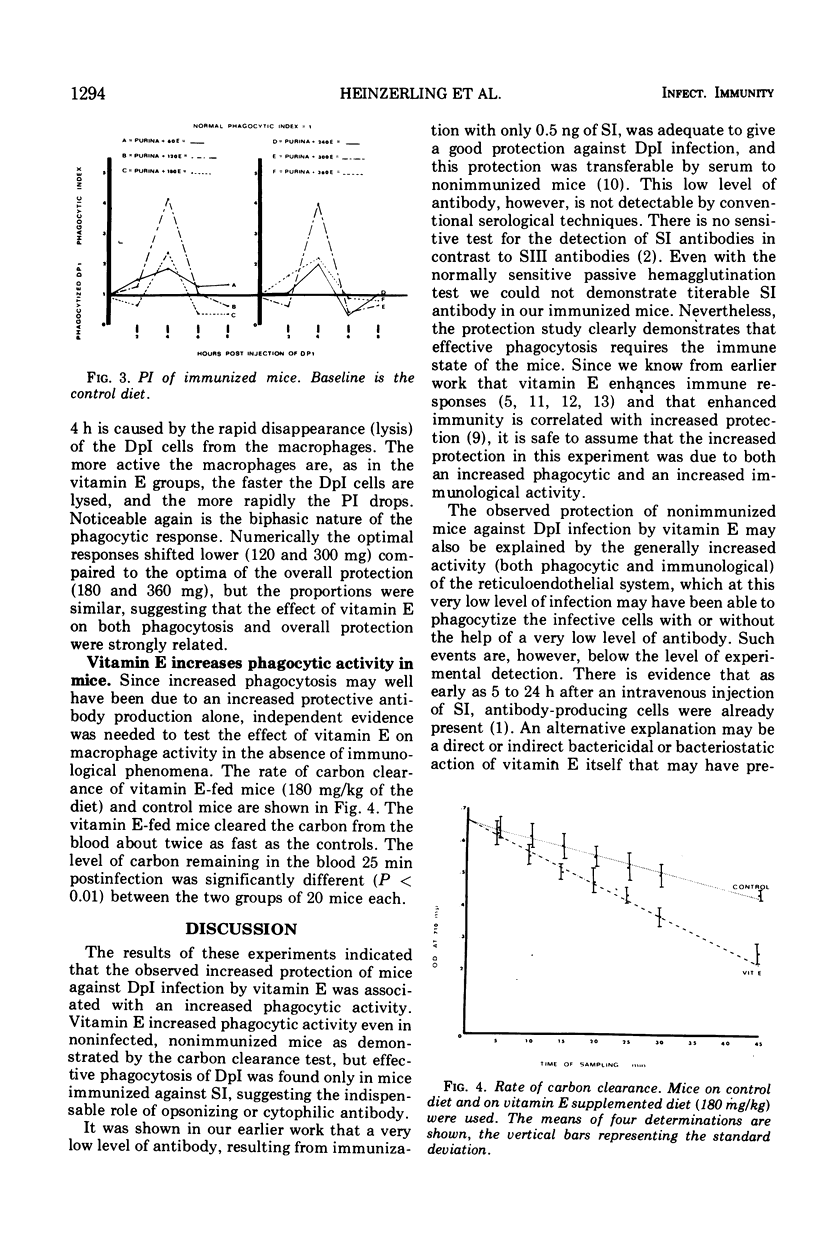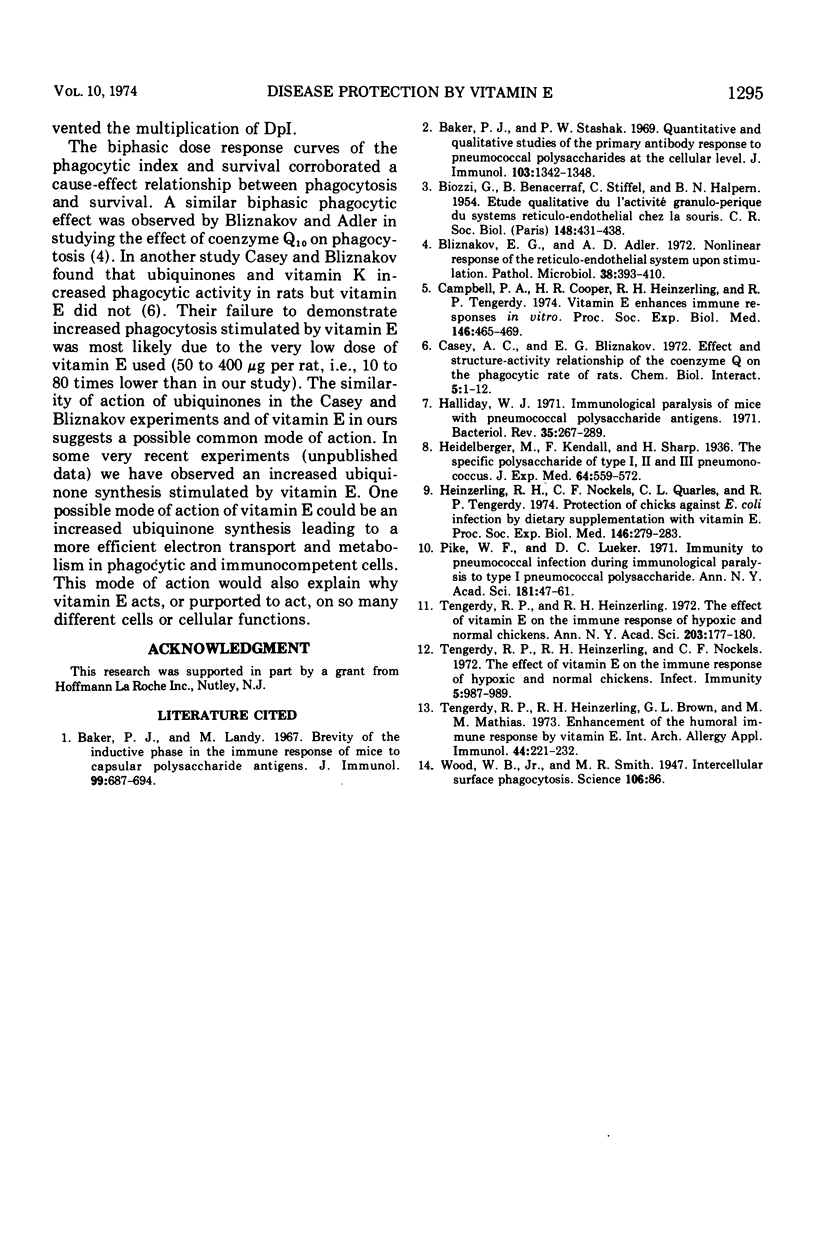Abstract
Vitamin E protects nonimmunized and immunized mice against fatal Diplococcus pneumoniae type I (DpI) infection. A dietary supplementation of 180 mg of dl-α-tocopheryl acetate per kg of diet increased survival of nonimmunized mice from 20 to 80% when challenged with 20 organisms, and of mice immunized with 0.5 ng of DpI polysaccharide from 15 to 70% when challenged with 20,000 organisms. The phagocytic index of immunized mice was four times higher in the 180-mg vitamin E group than in the control group. Both the survival and phagocytic index revealed a biphasic dose response, indicating a cause-effect relationship between phagocytosis and survival. Vitamin E also significantly increased the rate of carbon clearance from blood, indicating a general increase in phagocytic activity. The data indicated that increased macrophage activity probably aided by increased antibody production was the principal reason for increased protection.
Full text
PDF



Selected References
These references are in PubMed. This may not be the complete list of references from this article.
- Baker P. H., Stashak P. W. Quantitative and qualitative studies on the primary antibody response to pneumococcal polysaccharides at ehe cellular level. J Immunol. 1969 Dec;103(6):1342–1348. [PubMed] [Google Scholar]
- Baker P. J., Landy M. Brevity of the inductive phase in the immune response of mice to capsular polysaccharide antigens. J Immunol. 1967 Oct;99(4):687–694. [PubMed] [Google Scholar]
- Bliznakov E. G., Adler A. D. Nonlinear response of the reticuloendothelial system upon stimulation. Pathol Microbiol (Basel) 1972;38(6):393–410. doi: 10.1159/000162456. [DOI] [PubMed] [Google Scholar]
- Campbell P. A., Cooper H. R., Heinzerling R. H., Tengerdy R. P. Vitamin E enhances in vitro immune response by normal and nonadherent spleen cells. Proc Soc Exp Biol Med. 1974 Jun;146(2):465–469. doi: 10.3181/00379727-146-38127. [DOI] [PubMed] [Google Scholar]
- Casey A. C., Bliznakov E. G. Effect and structure-activity relationship of the coenzymes Q on the phagocytic rate of rats. Chem Biol Interact. 1972 Jun;5(1):1–12. doi: 10.1016/0009-2797(72)90042-7. [DOI] [PubMed] [Google Scholar]
- Halliday W. J. Immunological paralysis of mice with pneumococcal polysaccharide antigens. Bacteriol Rev. 1971 Sep;35(3):267–289. doi: 10.1128/br.35.3.267-289.1971. [DOI] [PMC free article] [PubMed] [Google Scholar]
- Heinzerling R. H., Nockels C. F., Quarles C. L., Tengerdy R. P. Protection of chicks against E. coli infection by dietary supplementation with vitamin E. Proc Soc Exp Biol Med. 1974 May;146(1):279–283. doi: 10.3181/00379727-146-38087. [DOI] [PubMed] [Google Scholar]
- Tengerdy R. P., Heinzerling R. H., Nockels C. F. Effect of vitamin E on the immune response of hypoxic and normal chickens. Infect Immun. 1972 Jun;5(6):987–989. doi: 10.1128/iai.5.6.987-989.1972. [DOI] [PMC free article] [PubMed] [Google Scholar]
- Tengerdy R. P., Heinzerling R. H. The effect of vitamin E on the immune response of hypoxic and normal chickens. Ann N Y Acad Sci. 1972 Dec 18;203:177–180. doi: 10.1111/j.1749-6632.1972.tb27873.x. [DOI] [PubMed] [Google Scholar]
- Tengerdy R. P., Henzerling R. H., Brown G. L., Mathias M. M. Enhancement of the humoral immune response by vitamin E. Int Arch Allergy Appl Immunol. 1973;44(2):221–232. doi: 10.1159/000230931. [DOI] [PubMed] [Google Scholar]
- Wood W. B., Jr, Smith M. R. Intercellular Surface Phagocytosis. Science. 1947 Jul 25;106(2743):86–87. doi: 10.1126/science.106.2743.86. [DOI] [PubMed] [Google Scholar]


